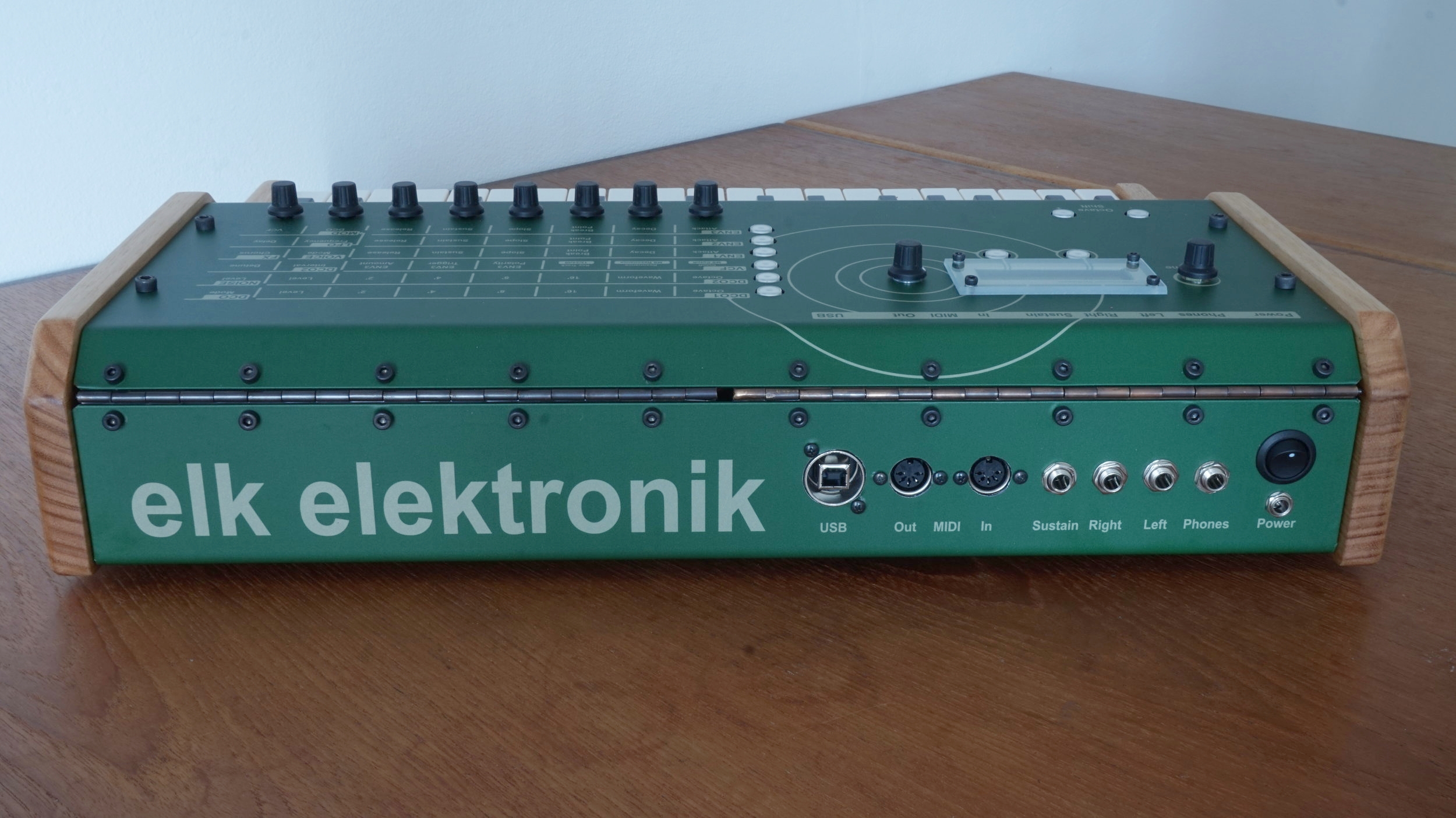KP-8
I have been working on this project for a while now. There is still work to do, but I'm excited to have achieved some key milestones in the construction of the case, and successful integration of KP-8 with the Poly-800.
KP-8 is a programming interface for the Korg Poly-800 Synthesizer. KP-8 offers access to all of the Poly-800 functions via a 6 x 8 matrix-style programming interface.
Parameters are logically grouped to allow access for up to 8 parameters at a time.
The pin for pin compatible interface enables you to simply unplug the cables from the screen/button board of the Poly-800 and plug in KP-8 for full control of the synthesizer via the new interface.
The KP-836 is a custom keyboard enclosure, designed to make the most of the Korg Poly-800, by combining a solid enclosure with the functionality of the KP-8 interface. For more information on the development of KP-8 and the construction of the KP-836 keyboard, please scroll down!
Beginnings
KP-8 was designed as a solution to my frustration with programming a patch on the Poly-800 via the limited programming interface. KP-8 would be a real-time interface that was capable of selecting banks of 8 parameters at once, allowing access to all of the Poly-800 parameters via 6 buttons and 8 knobs.
A previous step sequencer project had some hardware issues but these could be re-engineered and the boards used as a development platform for KP-8.
Hardware Improvements Enable KP-8
Some hardware modifications were required to enable user friendly feedback from buttons and indicators. New IO boards were developed that are universal for switches and pots, allowing new features to begin being implemented for KP-8.
Cleaning Up the Work Bench
As the project grew, it has took up more and more space on my workbench. It became more difficult to set up to quickly do a bit of programming when I had the time.
So, in an effort to clear up my work space and make the project quick and easy to set up for a session of programming, I decided to make an enclosure.
Building a Body
The time finally arrived to turn my drawings into a reality. It felt great that I was able to see my ideas taking form as I produced various iterations of designs, hardware layouts and graphical changes. After countless modifications, measurements and hours of just simply looking at my designs, I was very excited to take these drawings and bring them to life by building the enclosure.
The enclosure is made up of 3 x separate steel sections formed around a timber base that supports the keybed and the main PCBs.
Preparing the Enclosure
The enclosure was assembled and the location of all the electronics confirmed and tested before an undercoat was applied.
Applying the Vinyl Wrap
After looking into several options for displaying the panel artwork, I settled on applying a vinyl wrap to the enclosure. The application was tedious but I'm really happy with the results for this one-of-a-kind project.
A Bit of Class
I am very grateful to a close friend who kindly made up these beautiful Tasmanian Oak side panels for me. They are stunning and provide a fantastic finishing touch to the enclosure.
Randomizer
This exciting new feature provides additional functionality to the Poly-800. The KP-8 randomizer is useful when you need some inspiration for a new patch.
In addition to a global randomizer, the KP-8 randomizer is capable of selective randomization.
So, if you want to shape the sound a different way, simply randomize the oscillators or envelopes etc.
KP-836
I'm really happy with the finished product. It looks great, and provides a unique interface for my Poly-800.
What's still to do?
The enclosure is finished, and the interface is functioning well, but there are a few things that still need to be done. I stopped working on the firmware to build the enclosure. So, there are a few bugs that need fixing and some new features such as patch storage which still need to be implemented. I'd also like to install some of the popular mods available for the Poly-800.


































